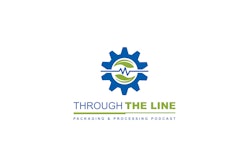
By definition, a scheduled or controlled drug is one whose use and distribution are highly regulated due to the potential for abuse. Although such drugs are involved in a small Minority-just 5% to 10% of the trials for which Fisher Clinical Services manages the clinical supply chain-a disproportionate amount of upfront effort is necessary to meet the regulatory requirements that govern their handling and use.
Failure to do so inevitably leads to costly delays for a sponsor-in shipping and receiving trial materials, getting a clinical trial off the ground, bringing key clinical sites online, and even audits or investigations by regulatory authorities-hat can postpone or prevent the completion of a trial or the licensure of an investigational drug.
The Controlled Substance Act
The regulations governing scheduled drugs are detailed in The Controlled Substance Act (CSA), a 1970 law enacted during the Nixon administration at a time of growing national concern over narcotics abuse and trafficking. The foundation of the CSA, which falls under the jurisdiction of the U.S. Department of Justice's Drug Enforcement Administration (DEA), is a five-tier “schedule” or classification system for drugs based upon their abuse potential.
At the top of the pyramid, occupying Schedule 1, are drugs with the highest abuse potential and no safe, accepted medical use in the United States-so-called “street drugs” such as heroin, LSD, PCP and crack cocaine, as well as marijuana.
In Schedule 2 are drugs with a high risk of abuse, but which nonetheless possess some safe and accepted medical uses-drugs such as morphine, cocaine, oxycodone (Percodan®), methylphenidate (Ritalin®), and dextroamphetamine (Dexadrine®).
Commonly prescribed drugs with less potential for abuse-including tranquilizers, sedatives, stimulants, anti-anxiety drugs such as diazepam (Valium®) and alpraolam (Xanax®), and non-narcotic analgesics such as acetaminophen with codeine (Tylenol® No. 3)--reside in Schedule III, IV, or V.
The schedules are also commonly known as C-I, C-II, C-III, C-IV and C-V. As a rule, the schedule to which a drug is assigned dictates the degree of precaution associated with it in the clinical supply chain. 1
Registration and recordkeeping
In addition to classifying scheduled drugs based on abuse potential, the CSA established a closed system of distribution-essentially a sealed supply chain-around those authorized to handle controlled substances. Every person, organization, and activity connected to controlled drugs in any way requires prior authorization from the DEA, significantly increasing the complexities of supply chain management.
• Individuals. All individuals and firms responsible for manufacturing, importing, exporting, distributing, or dispensing a scheduled drug must apply for and obtain a DEA registration in advance.
• Activities. Each discrete activity involving a controlled drug requires a separate registration from the DEA. If an individual or firm is conducting multiple activities-such as importing and dispensing a scheduled drug, as a clinical investigator might in the conduct of a clinical trial-a separate registration is required for each independent activity. In the context of a clinical supply chain, the requirement for multiple registrations is commonplace.
• Locations. If any activities involving a controlled drug take place at multiple locations-as in the case of several distribution sites within the same region, for example-a separate registration is required for each location.
• Drugs. A registration applies only to the specific drug or drugs for which it was expressly issued. For instance, if the same clinical investigator is registered to use one Schedule II drug in a clinical trial, and the trial protocol is revised to substitute another drug from the same schedule, the investigator must obtain an entirely new registration for the drug specified in the protocol.
• Research protocols.The protocol itself must also be submitted to the DEA for prior approval before materials can be shipped and the trial can get underway.
Importantly, the DEA also requires all registrants to maintain complete and accurate inventories of scheduled drugs, security for the storage of controlled substances that will be described in further detail, and records of each and every transaction. These records are subject to DEA audits and reconciliation.2
Key importing and exporting challenges
Given rigorous registration requirements, it stands to reason that importing and exporting scheduled drugs demands considerable and careful planning. Planning should allow sufficient time to complete multiple steps, many of which must take place sequentially.
• First, only individuals who are registered with and authorized by the DEA to import controlled substances may use and submit relevant paperwork, including declarations and applications for permits.
• An importer must have any scheduled drug slated for import added to the DEA Import Registration. While timelines can vary, allowing four weeks for turnaround is recommended.
• DEA Form 357 must be submitted in order to import controlled substances for domestic and/or scientific purposes.
• The DEA will respond to receipt of Form 357 by issuing DEA Form 35, the permit to import controlled substances. From start to finish, this part of the approval cycle can take up to six weeks.
• A quota application is also required by both the receiving country and site for importing C-II controlled substances. This process can take from four to six weeks.2
Exporting
As one can imagine, the regulations and number of countries to which a scheduled drug is being exported increases the complexity of the export process.
• The only individuals who may use and submit relevant paperwork, including declarations and applications for permits, are those registered with and authorized by the DEA to export controlled substances.
• An exporter must first add a scheduled drug for export to the DEA Export Registration, which generally requires a four-week turnaround.
• Obtaining a permit to export a drug requires submission of either DEA Form 161 or DEA Form 161R. Form 161 should be used for exporting a scheduled drug to a single country. However, if a scheduled drug is bound for one or more countries by way of another-in the case of a regional facility responsible for shipping clinical supplies to sites in multiple countries-then DEA Form 161R, the application for a permit to export a controlled substance for subsequent re-export, is used instead.
• Receipt of Form 161 prompts the DEA to issue DEA Form 36, the permit to export controlled substances. This approval process often takes up to six weeks.
• Schedule III non-narcotics and Schedules IV and V require the submission of DEA Form 236, a controlled substance import/export declaration. Once Form 236 is submitted, a company must wait 15 days for any DEA objections. If the DEA expresses no objections by then, it's safe to export the drug.
• Export Forms 236 and 161 must be accompanied by the country's import permit. It's important to note that international standards differ on classifications of scheduled drugs, which are not necessarily global in nature. Fisher Clinical Services relies upon its regional facilities in North America, Europe, Latin America, and Asia for accurate information.
The receiving country and site also require a quota application for exporting C-II drugs. Turnaround time is another four to six weeks.2
Maintaining the 'blind' within C-II trials: A case study
Given the specificity of detail that surrounds the handling of scheduled drugs, another complexity of supply chain management is that of maintaining the blind in clinical trials.
In the United States, the movement of C-II drugs requires that the requestor, often a clinical site, complete DEA Form 222. A distributor must have the form in hand before shipping the drug to the site.
Form 222, however, is required to state-specific quantities of the C-II drug being shipped-a level of detail that could be unblinding in interactive voice response system (IVRS) trials when only a certain product group is required for resupplying the clinical site. There are no issues, however, if the study is packaged by block. 2
Fisher Clinical Services partnered with a sponsor and an IVR provider on a creative approach to maintain the blind in a recent study. In the case study related below, the sponsor obtained approval for the process from the DEA two months prior to initiation:
• The study contained 43 different container groups managed by an IVRS. The quantity of controlled substances in each group differed, but the overall study contained only eight different C-II drugs.
• The clinical sites each completed a blanket Form 222 requesting a standard quantity of each of the eight C-II drugs.
• The Fisher Distribution Center received the IVR order and broke down the actual amount of C-II drugs being shipped. Fisher recorded the actual amount shipped on the Form 222.
• The Distribution Center continued to use the blanket Form 222 until either a product amount exceeded the quantity requested on the current Form 222 or the Form 222 expired 60 days later.
• The Forms 222 were not shipped back to the requestors with the supplies; hence, the sites were not unblinded.
• The sponsor was then contacted so the site could generate a new blanket Form 222 for resupplies to continue.
• When creating Forms 222 for returning drug quantities, the sites had to submit a form to the return goods recipient, detailing the patient ID numbers for the drugs being returned.
• Supplies were then broken down to the drug product level and the Form 222 was completed. Since the Form 222 would have been unblinding, the quantities were left blank.
• At the completion of the study and return of drugs for reconciliation, each clinical site received a memo breaking down the actual quantities of drugs that were shipped back. This memo enabled the site to complete the mandatory DEA documentation for submission.
Five key links in the supply chain
Importing, exporting and maintaining the blind in trials are not the only challenges to supply chain management. There are other potential issues at multiple points where the chain can unravel:
• Internal staffing
• Storage and security
• Packaging requirements
• Distribution considerations
• Returns and destruction
Internal staffing: If a chain is only as strong as its weakest link, the weakest link in a clinical supply chain containing narcotics is undoubtedly people.
According to the DEA, millions of drug doses are diverted each year through theft from manufacturers, distributors, importers, exporters, and treatment facilities. While the amount varies by year, it continues to increase for Schedule II drugs such as OxyContin®. Much of the diversion of pharmaceuticals through theft is attributable to employees of pharmaceutical drug manufacturers, commercial distributors, clinical sites, hospitals, and pharmacies.3
The DEA holds organizations and facilities involved in the manufacture, handling, and distribution or dispensing of scheduled drugs responsible for conducting comprehensive screening of potential employees. The goal is, of course, thwarting theft by weeding out anyone who is or may be at risk of diverting drugs.
The agency recommends that employers thoroughly question potential employees about felony and misdemeanor convictions, current criminal charges, and past or present use of narcotics, amphetamines or barbiturates not prescribed by a doctor.
Human nature being what it is, however, it's unlikely that job seekers bent on drug diversion or abuse would answer such questions truthfully. Therefore, the DEA further recommends obtaining authorization from job applicants to obtain background checks, starting with local law enforcement agencies up to and including the DEA itself.2
Finally, organizations are obligated to maintain current lists of individuals with access to areas w/here these products are stored and standard operating procedures (SOPs) detailing how such authorization was granted.
Storage and security
When it comes to securing scheduled drugs, security doesn't begin and end with careful hiring practices. Facilities that house scheduled drugs are also required to engage a variety of security precautions to prevent diversion and theft. The Schedule to which a drug belongs determines the degree of security associated with it:
• C-II drugs must be stored in vaults or safes equipped with a 24-hour alarm system operating seven days a week that transmits a signal to a security firm, local or state law enforcement agency upon unauthorized entry
• Drugs in C-III, C-IV and C-V may be stored in bolted cages, typically located in a warehouse, that are similarly equipped with an alarm system
Physical barriers notwithstanding, facilities are required to limit employee access to areas in which drug storage vaults, safes and cages are located. Facilities are also required to document employee comings and goings in personnel access logs. In addition, a minimum of two observers must be present for all handling activities. Records are subject to audit by the DEA, by whom unscheduled visits and inspections are common.
These requirements can be daunting for many facilities, since no one individual can assume total responsibility for the safekeeping of scheduled drugs. 2
Packaging requirements
Before that clinical investigator can obtain a controlled drug for use in a trial, however, the drug must be packaged in a manner that prevents tampering and theft. A packaging facility must demonstrate to the satisfaction of the DEA that it has approved procedures in place to securely package and store products.
Among the DEA's mandates is the presence of multiple individuals at all times during packaging. Packaging for scheduled drugs must include tamper-proof seals and/or tape bearing documentation.
Handling and accountability standards in packaging facilities for scheduled drugs are similarly mandated and unforgiving-between 99.5 and 100.5% of bulk materials must be accounted for, as must 100% of prefilled material. In short, nothing, not a single drug unit, can go missing. Deviations must be reported to the DEA, prompting coordinated agency investigations. 2
Distribution considerations
Once scheduled drugs are packaged, they are readied for distribution, a process that is also closely scrutinized. Under federal law, a distributor is responsible for ensuring that scheduled drugs are shipped only to individuals and sites that bear valid licenses to receive these materials.
The DEA maintains a central database of licensees. Before shipping materials, Fisher Clinical Services links to the DEA database to confirm the licensure of scheduled drug destinations, among them clinical sites. Clinical sites are required to obtain dispensing licenses permitting them to accept and store specific scheduled drugs.
Shipments can only be sent to and accepted at the address specified on the license. As an added precaution, packages should not bear markings or documentation identifying their content as controlled drugs. 2
With these considerations in mind, some sponsors prefer to use approved carriers that offer special services for handling controlled substances. One such carrier is Fisher Priority Solutions.
Returns and destruction
When a clinical trial ends, unused supplies of all C-II, C-III, C-IV and C-V drugs must be returned to Fisher Clinical Services for reconciliation. The reconciliation process requires that there be an accounting for every tablet of scheduled drugs or a DEA investigation will ensue.
This strict accountability to prevent diversion or abuse continues until the unused drug is incinerated at an authorized destruction center. Drugs slated for incineration are delivered to the destruction center on the day for which destruction is scheduled. Date selection is coordinated with the center and the DEA between four and six weeks in advance. This three-way coordination is necessary because a certified DEA observer must be present when the drugs are destroyed.2
The ABCs of scheduled drugs
Scheduled drugs make the management of a clinical supply chain infinitely more complex. To minimize bumps, it's helpful to keep the following in mind:
A. Allow enough time for planning and groundwork. The highly regulated nature of scheduled drugs requires substantially more upfront effort from a clinical supply chain perspective. This often includes educating sponsors, guiding clinical investigators and double checking details to confirm that paperwork such as registrations and licenses is current and in place on time. Insufficient attention to these many details can bring the supply chain to a slowdown or halt.
B. Be clear in communicating with the DEA. Communications with the agency must be clear, specific and detailed, particularly when recommending an approach that may be routine for a supplier, but entirely new to the agency. Uncertainty or confusion on the part of the DEA can lead to audits.
C. Consult the rulebook as necessary. The regulations governing scheduled drugs are available under Title 21 of the Code of Federal Regulations (CFR), Part 1300-1399; import and export activities are under Part 1312.2
-By Leon Wyszkowski, vice president and general manager at Fisher Clinical Services, a Bristol, PA-based firm serving the packaging and distribution requirements of clinical trials worldwide.
References
1) Drug Enforcement Administration (DEA) website; The Controlled Substance Act; http://www.usdoj.gov/dea/pubs/abuse/1-csa.htm; referenced 3/16/09
2) The Government Printing Office (GPO) Access website; Title 21- Food and Drugs, Chapter II - Drug Enforcement Administration - Department of Justice; http://ecfr.gpoaccess.gov/cgi/t/text/text-idx?c=ecfr&tpl=/ecfrbrowse/Title21/21cfr1301_main_02.tpl; referenced 3/16/09
3) National Drug Intelligence Center; Pharmaceuticals Drug Threat Assessment,
November 2004; http://www.usdoj.gov/ndic/pubs11/11449/diversion.htm
Referenced 3/19/09
Failure to do so inevitably leads to costly delays for a sponsor-in shipping and receiving trial materials, getting a clinical trial off the ground, bringing key clinical sites online, and even audits or investigations by regulatory authorities-hat can postpone or prevent the completion of a trial or the licensure of an investigational drug.
The Controlled Substance Act
The regulations governing scheduled drugs are detailed in The Controlled Substance Act (CSA), a 1970 law enacted during the Nixon administration at a time of growing national concern over narcotics abuse and trafficking. The foundation of the CSA, which falls under the jurisdiction of the U.S. Department of Justice's Drug Enforcement Administration (DEA), is a five-tier “schedule” or classification system for drugs based upon their abuse potential.
At the top of the pyramid, occupying Schedule 1, are drugs with the highest abuse potential and no safe, accepted medical use in the United States-so-called “street drugs” such as heroin, LSD, PCP and crack cocaine, as well as marijuana.
In Schedule 2 are drugs with a high risk of abuse, but which nonetheless possess some safe and accepted medical uses-drugs such as morphine, cocaine, oxycodone (Percodan®), methylphenidate (Ritalin®), and dextroamphetamine (Dexadrine®).
Commonly prescribed drugs with less potential for abuse-including tranquilizers, sedatives, stimulants, anti-anxiety drugs such as diazepam (Valium®) and alpraolam (Xanax®), and non-narcotic analgesics such as acetaminophen with codeine (Tylenol® No. 3)--reside in Schedule III, IV, or V.
The schedules are also commonly known as C-I, C-II, C-III, C-IV and C-V. As a rule, the schedule to which a drug is assigned dictates the degree of precaution associated with it in the clinical supply chain. 1
Registration and recordkeeping
In addition to classifying scheduled drugs based on abuse potential, the CSA established a closed system of distribution-essentially a sealed supply chain-around those authorized to handle controlled substances. Every person, organization, and activity connected to controlled drugs in any way requires prior authorization from the DEA, significantly increasing the complexities of supply chain management.
• Individuals. All individuals and firms responsible for manufacturing, importing, exporting, distributing, or dispensing a scheduled drug must apply for and obtain a DEA registration in advance.
• Activities. Each discrete activity involving a controlled drug requires a separate registration from the DEA. If an individual or firm is conducting multiple activities-such as importing and dispensing a scheduled drug, as a clinical investigator might in the conduct of a clinical trial-a separate registration is required for each independent activity. In the context of a clinical supply chain, the requirement for multiple registrations is commonplace.
• Locations. If any activities involving a controlled drug take place at multiple locations-as in the case of several distribution sites within the same region, for example-a separate registration is required for each location.
• Drugs. A registration applies only to the specific drug or drugs for which it was expressly issued. For instance, if the same clinical investigator is registered to use one Schedule II drug in a clinical trial, and the trial protocol is revised to substitute another drug from the same schedule, the investigator must obtain an entirely new registration for the drug specified in the protocol.
• Research protocols.The protocol itself must also be submitted to the DEA for prior approval before materials can be shipped and the trial can get underway.
Importantly, the DEA also requires all registrants to maintain complete and accurate inventories of scheduled drugs, security for the storage of controlled substances that will be described in further detail, and records of each and every transaction. These records are subject to DEA audits and reconciliation.2
Key importing and exporting challenges
Given rigorous registration requirements, it stands to reason that importing and exporting scheduled drugs demands considerable and careful planning. Planning should allow sufficient time to complete multiple steps, many of which must take place sequentially.
• First, only individuals who are registered with and authorized by the DEA to import controlled substances may use and submit relevant paperwork, including declarations and applications for permits.
• An importer must have any scheduled drug slated for import added to the DEA Import Registration. While timelines can vary, allowing four weeks for turnaround is recommended.
• DEA Form 357 must be submitted in order to import controlled substances for domestic and/or scientific purposes.
• The DEA will respond to receipt of Form 357 by issuing DEA Form 35, the permit to import controlled substances. From start to finish, this part of the approval cycle can take up to six weeks.
• A quota application is also required by both the receiving country and site for importing C-II controlled substances. This process can take from four to six weeks.2
Exporting
As one can imagine, the regulations and number of countries to which a scheduled drug is being exported increases the complexity of the export process.
• The only individuals who may use and submit relevant paperwork, including declarations and applications for permits, are those registered with and authorized by the DEA to export controlled substances.
• An exporter must first add a scheduled drug for export to the DEA Export Registration, which generally requires a four-week turnaround.
• Obtaining a permit to export a drug requires submission of either DEA Form 161 or DEA Form 161R. Form 161 should be used for exporting a scheduled drug to a single country. However, if a scheduled drug is bound for one or more countries by way of another-in the case of a regional facility responsible for shipping clinical supplies to sites in multiple countries-then DEA Form 161R, the application for a permit to export a controlled substance for subsequent re-export, is used instead.
• Receipt of Form 161 prompts the DEA to issue DEA Form 36, the permit to export controlled substances. This approval process often takes up to six weeks.
• Schedule III non-narcotics and Schedules IV and V require the submission of DEA Form 236, a controlled substance import/export declaration. Once Form 236 is submitted, a company must wait 15 days for any DEA objections. If the DEA expresses no objections by then, it's safe to export the drug.
• Export Forms 236 and 161 must be accompanied by the country's import permit. It's important to note that international standards differ on classifications of scheduled drugs, which are not necessarily global in nature. Fisher Clinical Services relies upon its regional facilities in North America, Europe, Latin America, and Asia for accurate information.
The receiving country and site also require a quota application for exporting C-II drugs. Turnaround time is another four to six weeks.2
Maintaining the 'blind' within C-II trials: A case study
Given the specificity of detail that surrounds the handling of scheduled drugs, another complexity of supply chain management is that of maintaining the blind in clinical trials.
In the United States, the movement of C-II drugs requires that the requestor, often a clinical site, complete DEA Form 222. A distributor must have the form in hand before shipping the drug to the site.
Form 222, however, is required to state-specific quantities of the C-II drug being shipped-a level of detail that could be unblinding in interactive voice response system (IVRS) trials when only a certain product group is required for resupplying the clinical site. There are no issues, however, if the study is packaged by block. 2
Fisher Clinical Services partnered with a sponsor and an IVR provider on a creative approach to maintain the blind in a recent study. In the case study related below, the sponsor obtained approval for the process from the DEA two months prior to initiation:
• The study contained 43 different container groups managed by an IVRS. The quantity of controlled substances in each group differed, but the overall study contained only eight different C-II drugs.
• The clinical sites each completed a blanket Form 222 requesting a standard quantity of each of the eight C-II drugs.
• The Fisher Distribution Center received the IVR order and broke down the actual amount of C-II drugs being shipped. Fisher recorded the actual amount shipped on the Form 222.
• The Distribution Center continued to use the blanket Form 222 until either a product amount exceeded the quantity requested on the current Form 222 or the Form 222 expired 60 days later.
• The Forms 222 were not shipped back to the requestors with the supplies; hence, the sites were not unblinded.
• The sponsor was then contacted so the site could generate a new blanket Form 222 for resupplies to continue.
• When creating Forms 222 for returning drug quantities, the sites had to submit a form to the return goods recipient, detailing the patient ID numbers for the drugs being returned.
• Supplies were then broken down to the drug product level and the Form 222 was completed. Since the Form 222 would have been unblinding, the quantities were left blank.
• At the completion of the study and return of drugs for reconciliation, each clinical site received a memo breaking down the actual quantities of drugs that were shipped back. This memo enabled the site to complete the mandatory DEA documentation for submission.
Five key links in the supply chain
Importing, exporting and maintaining the blind in trials are not the only challenges to supply chain management. There are other potential issues at multiple points where the chain can unravel:
• Internal staffing
• Storage and security
• Packaging requirements
• Distribution considerations
• Returns and destruction
Internal staffing: If a chain is only as strong as its weakest link, the weakest link in a clinical supply chain containing narcotics is undoubtedly people.
According to the DEA, millions of drug doses are diverted each year through theft from manufacturers, distributors, importers, exporters, and treatment facilities. While the amount varies by year, it continues to increase for Schedule II drugs such as OxyContin®. Much of the diversion of pharmaceuticals through theft is attributable to employees of pharmaceutical drug manufacturers, commercial distributors, clinical sites, hospitals, and pharmacies.3
The DEA holds organizations and facilities involved in the manufacture, handling, and distribution or dispensing of scheduled drugs responsible for conducting comprehensive screening of potential employees. The goal is, of course, thwarting theft by weeding out anyone who is or may be at risk of diverting drugs.
The agency recommends that employers thoroughly question potential employees about felony and misdemeanor convictions, current criminal charges, and past or present use of narcotics, amphetamines or barbiturates not prescribed by a doctor.
Human nature being what it is, however, it's unlikely that job seekers bent on drug diversion or abuse would answer such questions truthfully. Therefore, the DEA further recommends obtaining authorization from job applicants to obtain background checks, starting with local law enforcement agencies up to and including the DEA itself.2
Finally, organizations are obligated to maintain current lists of individuals with access to areas w/here these products are stored and standard operating procedures (SOPs) detailing how such authorization was granted.
Storage and security
When it comes to securing scheduled drugs, security doesn't begin and end with careful hiring practices. Facilities that house scheduled drugs are also required to engage a variety of security precautions to prevent diversion and theft. The Schedule to which a drug belongs determines the degree of security associated with it:
• C-II drugs must be stored in vaults or safes equipped with a 24-hour alarm system operating seven days a week that transmits a signal to a security firm, local or state law enforcement agency upon unauthorized entry
• Drugs in C-III, C-IV and C-V may be stored in bolted cages, typically located in a warehouse, that are similarly equipped with an alarm system
Physical barriers notwithstanding, facilities are required to limit employee access to areas in which drug storage vaults, safes and cages are located. Facilities are also required to document employee comings and goings in personnel access logs. In addition, a minimum of two observers must be present for all handling activities. Records are subject to audit by the DEA, by whom unscheduled visits and inspections are common.
These requirements can be daunting for many facilities, since no one individual can assume total responsibility for the safekeeping of scheduled drugs. 2
Packaging requirements
Before that clinical investigator can obtain a controlled drug for use in a trial, however, the drug must be packaged in a manner that prevents tampering and theft. A packaging facility must demonstrate to the satisfaction of the DEA that it has approved procedures in place to securely package and store products.
Among the DEA's mandates is the presence of multiple individuals at all times during packaging. Packaging for scheduled drugs must include tamper-proof seals and/or tape bearing documentation.
Handling and accountability standards in packaging facilities for scheduled drugs are similarly mandated and unforgiving-between 99.5 and 100.5% of bulk materials must be accounted for, as must 100% of prefilled material. In short, nothing, not a single drug unit, can go missing. Deviations must be reported to the DEA, prompting coordinated agency investigations. 2
Distribution considerations
Once scheduled drugs are packaged, they are readied for distribution, a process that is also closely scrutinized. Under federal law, a distributor is responsible for ensuring that scheduled drugs are shipped only to individuals and sites that bear valid licenses to receive these materials.
The DEA maintains a central database of licensees. Before shipping materials, Fisher Clinical Services links to the DEA database to confirm the licensure of scheduled drug destinations, among them clinical sites. Clinical sites are required to obtain dispensing licenses permitting them to accept and store specific scheduled drugs.
Shipments can only be sent to and accepted at the address specified on the license. As an added precaution, packages should not bear markings or documentation identifying their content as controlled drugs. 2
With these considerations in mind, some sponsors prefer to use approved carriers that offer special services for handling controlled substances. One such carrier is Fisher Priority Solutions.
Returns and destruction
When a clinical trial ends, unused supplies of all C-II, C-III, C-IV and C-V drugs must be returned to Fisher Clinical Services for reconciliation. The reconciliation process requires that there be an accounting for every tablet of scheduled drugs or a DEA investigation will ensue.
This strict accountability to prevent diversion or abuse continues until the unused drug is incinerated at an authorized destruction center. Drugs slated for incineration are delivered to the destruction center on the day for which destruction is scheduled. Date selection is coordinated with the center and the DEA between four and six weeks in advance. This three-way coordination is necessary because a certified DEA observer must be present when the drugs are destroyed.2
The ABCs of scheduled drugs
Scheduled drugs make the management of a clinical supply chain infinitely more complex. To minimize bumps, it's helpful to keep the following in mind:
A. Allow enough time for planning and groundwork. The highly regulated nature of scheduled drugs requires substantially more upfront effort from a clinical supply chain perspective. This often includes educating sponsors, guiding clinical investigators and double checking details to confirm that paperwork such as registrations and licenses is current and in place on time. Insufficient attention to these many details can bring the supply chain to a slowdown or halt.
B. Be clear in communicating with the DEA. Communications with the agency must be clear, specific and detailed, particularly when recommending an approach that may be routine for a supplier, but entirely new to the agency. Uncertainty or confusion on the part of the DEA can lead to audits.
C. Consult the rulebook as necessary. The regulations governing scheduled drugs are available under Title 21 of the Code of Federal Regulations (CFR), Part 1300-1399; import and export activities are under Part 1312.2
-By Leon Wyszkowski, vice president and general manager at Fisher Clinical Services, a Bristol, PA-based firm serving the packaging and distribution requirements of clinical trials worldwide.
References
1) Drug Enforcement Administration (DEA) website; The Controlled Substance Act; http://www.usdoj.gov/dea/pubs/abuse/1-csa.htm; referenced 3/16/09
2) The Government Printing Office (GPO) Access website; Title 21- Food and Drugs, Chapter II - Drug Enforcement Administration - Department of Justice; http://ecfr.gpoaccess.gov/cgi/t/text/text-idx?c=ecfr&tpl=/ecfrbrowse/Title21/21cfr1301_main_02.tpl; referenced 3/16/09
3) National Drug Intelligence Center; Pharmaceuticals Drug Threat Assessment,
November 2004; http://www.usdoj.gov/ndic/pubs11/11449/diversion.htm
Referenced 3/19/09





















